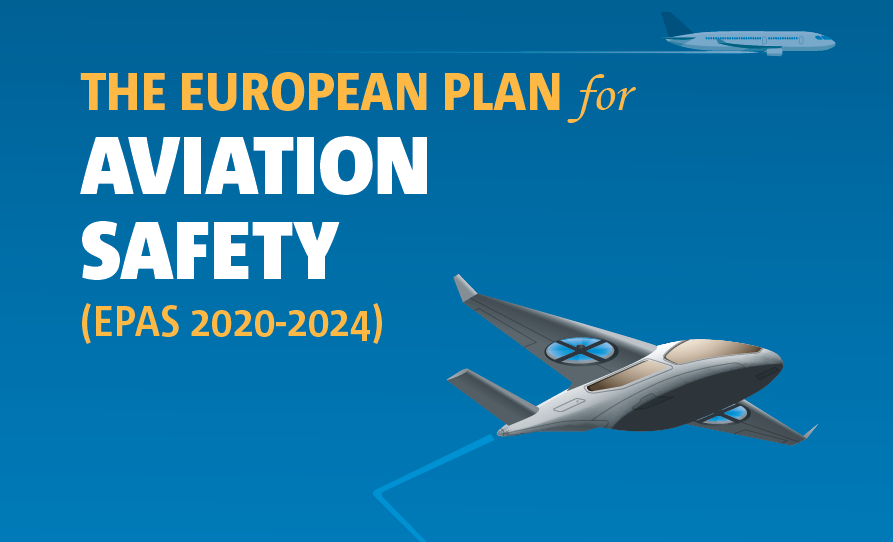The landscape of European Aviation is always evolving. We know that many people find it difficult to understand what is happening and most importantly why. This part of the website will help you to learn more about the strategic safety priorities for the European Rotorcraft community. You will find all the information you need about what safety actions are under development in the European Plan for Aviation Safety (EPAS) and their latest status. This is also the place to keep in touch with what is changing that might affect you and your operations.
The Helicopter Community – Working Together in Collaboration
Together we all share the common goal of continually improving helicopter safety and this is a truly collaborative activity. EASA doesn’t work in isolation and there are a number of teams such as the Network of Analysts and the Advisory Bodies that support EASA in identifying the most important risks and what actions should be taken to help mitigate them. For helicopters, this is done through the Rotorcraft Committee or R.COM as it is more commonly known. The group is chaired by a representative from the European Helicopter Association (EHA) and involves manufacturers, training organisations and operators that cover the diverse nature of rotorcraft operations. Prior to R.COM meetings a dedicated group review recent accidents and key risks that also supports the decision making.
The European Plan for Aviation Safety
The EPAS is the instrument used to prioritise and manage actions to maintain and further improve aviation safety and environmental protection in Europe. It seeks to do this while ensuring efficiency, proportionality and level playing field at the same time. EPAS is a safety action plan derived from the main safety risks identified at European level.
It’s built on a proactive approach to support the future growth of aviation while securing a high and uniform level of safety for all Member States (MSs). This allows the European Commission (EC), EASA and the Member States to take the necessary actions at the right time in order to prioritise the risks to be managed. It also helps us to face the challenges posed by the developing system, its increasing complexity and the implementation of new business models and new technologies.
EPAS is a five-year plan reviewed on a yearly basis in collaboration with the Advisory Bodies.
EPAS is also consistent with the ICAO Global Aviation Safety Plan (GASP) at global level. You can find out more about the EPAS itself at the link here.

Data-Driven Decision Making – A Risk-Based Approach to Decision Making
The decision making that underpins the EPAS is driven by safety data and intelligence. The European Safety Risk Management (SRM) process uses information from accidents, serious incidents and other occurrences reported to EASA and the other competent authorities and has 5 clear and specific steps:
Identification of Safety Issues.
Analysis of occurrences and other supporting information to identify the most important safety risks and issues. The results are captured in Safety Risk Portfolios that you can find in the EASA Annual Safety Review.
Assessment of Safety Issues.
These assessments are led by EASA and supported by industry collaborative groups. The Safety Issue Assessments (SIA) provides potential actions for the EPAS. This is followed by the Best Intervention Strategy (BIS) assessment, which considers the wider implications and benefits of the proposed actions and makes recommendations on the actions to be implemented in the EPAS.
Definition and Programming of Safety Actions.
Formal EPAS actions proposals are then made to the Advisory Bodies. Once discussed and agreed upon, the actions are then included in the next version of the EPAS. Prior to publication, the EPAS is approved by the EASA Management Board.
Implementation of Follow-Up.
The next step in the process involves the implementation and follow-up of the actions that have been included within the EPAS. There are a number of different types of action within the EPAS. These include focused Member State actions (mainly oversight), research, rulemaking and safety promotion.
Safety Performance Measurement.
The final stage in the process is then the measurement of safety performance. This serves two purposes, firstly to monitor the changes that have resulted from the implementation of safety actions. Secondly, it also serves to monitor the aviation system so that new safety issues can be identified.
The EASA Rotorcraft Safety Roadmap
With over 7,700 civil rotorcraft operating across Europe, helicopters provide a wide range of services to the community. This includes Helicopter Emergency Medical Services (HEMS), surveillance, police, aerial work, agriculture and offshore activities. Currently in Europe there is one rotorcraft accident every week. In December 2018, EASA officially launched the Rotorcraft Roadmap with the vision to achieve a significant safety improvement and support continued growth for the industry. The Roadmap has the following key objectives:
- Improve overall Rotorcraft safety by 50% within the next 10 years.
- Make positive and visible changes to Rotorcraft Safety trends within the next 5 years.
- Develop performance-based and proportionate solutions to help maintain competitiveness, leadership and the sustainability of European industry.
This Together4Safety website was developed as part of the Work Stream Safety Promotion of the Roadmap. You can keep up with all the latest progress with the Rotorcraft Roadmap on the dedicated page here.

Keeping Updated with Safety Actions
There is a lot going on in the European Aviation Community and it’s not always easy to keep up with everything. At the dedicated page (here – insert link) you can find out the latest status of all the EPAS actions that affect the Rotorcraft Community. We will also provide updates every month on the latest news page of the site. As an added bonus, if you create an account for the Rotorcraft Community you will receive all the latest information on a regular basis direct to your email inbox – don’t worry we won’t be spamming you every day.